What President Jimmy Carter did when he visited Miami and the Keys. See how it looked
President Jimmy Carter visited Miami in June 1980. It wasn’t an easy time in South Florida.
The region was reeling from racial unrest after the verdict in the deadly police beating of Arthur McDuffie, and the arrival of thousands of Cubans in the Mariel Boatlift.
Carter, who is now in hospice care at home in Georgia, also visited Miami in 1991, after his presidency, for his house-building work with Habitat for Humanity. And he made several stops in the Florida Keys.
Let’s go back in time through the archives.
What follows is original coverage of Carter’s visits and photos of his time in South Florida.
Photos from 1980 in South Florida
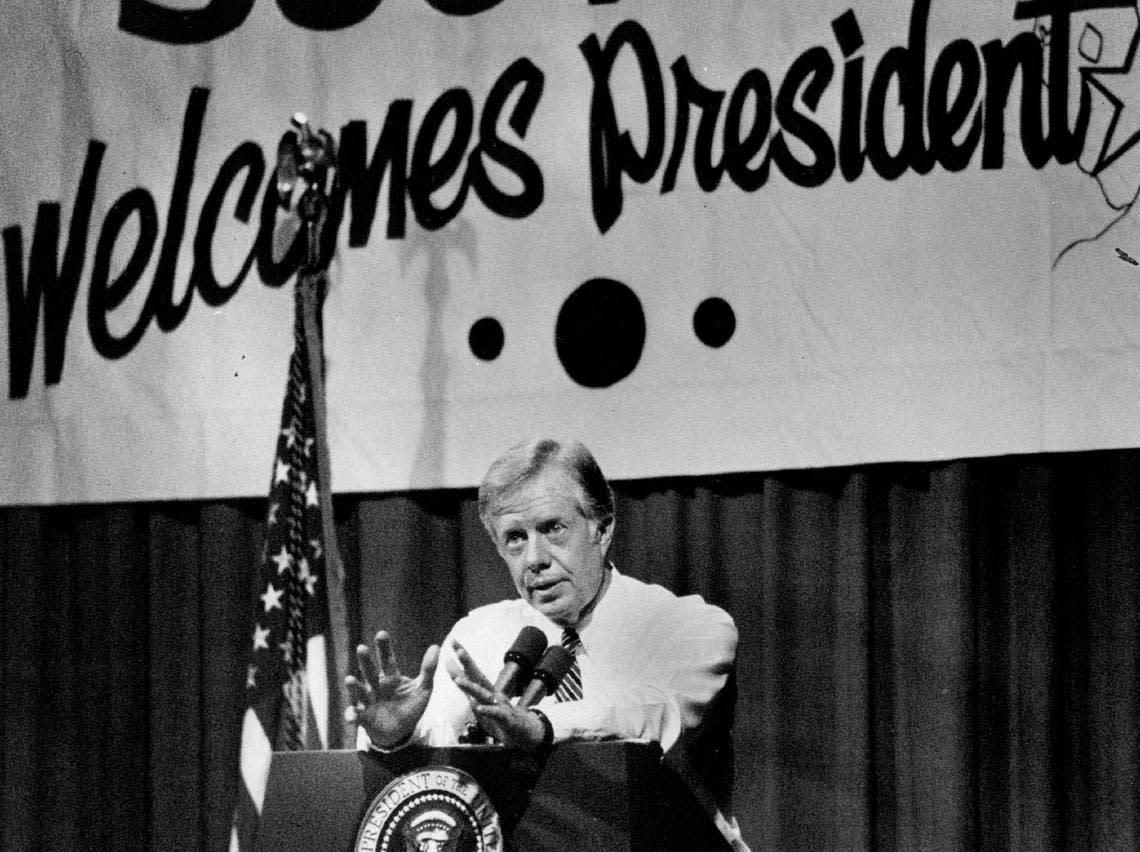
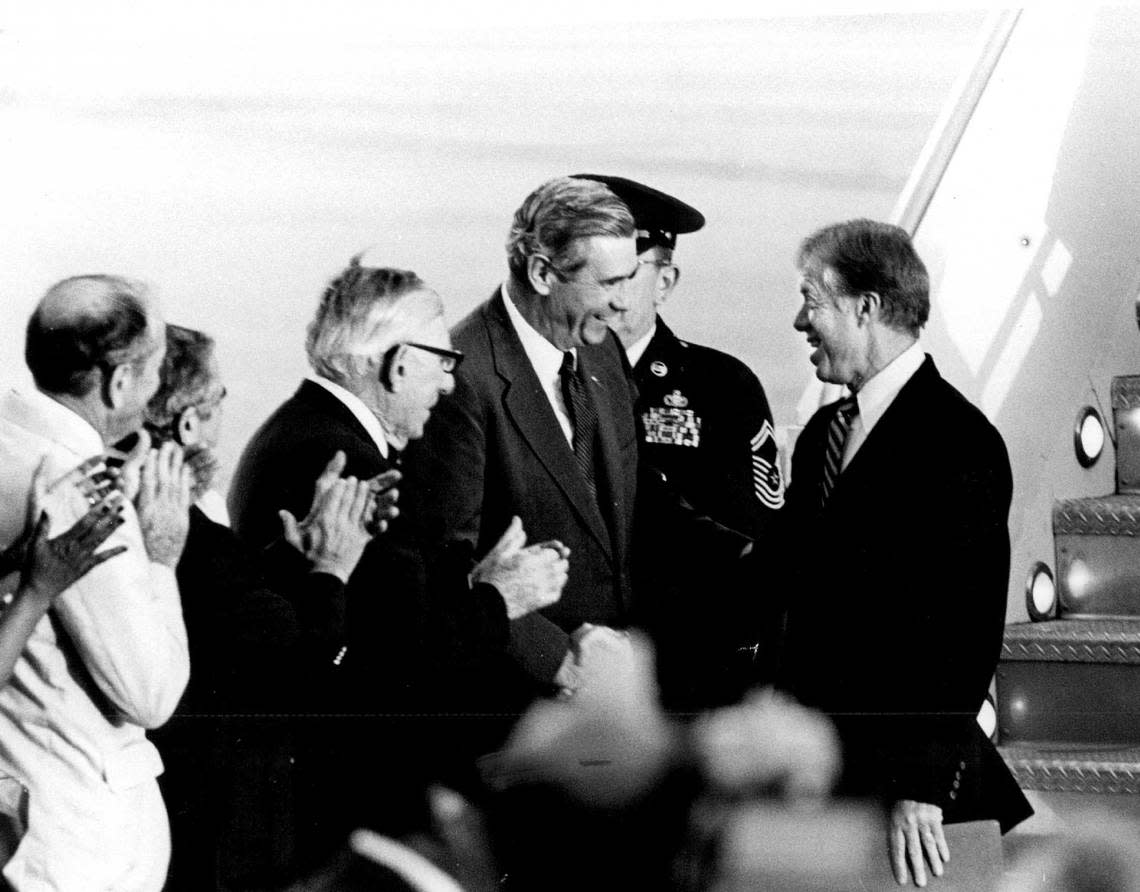
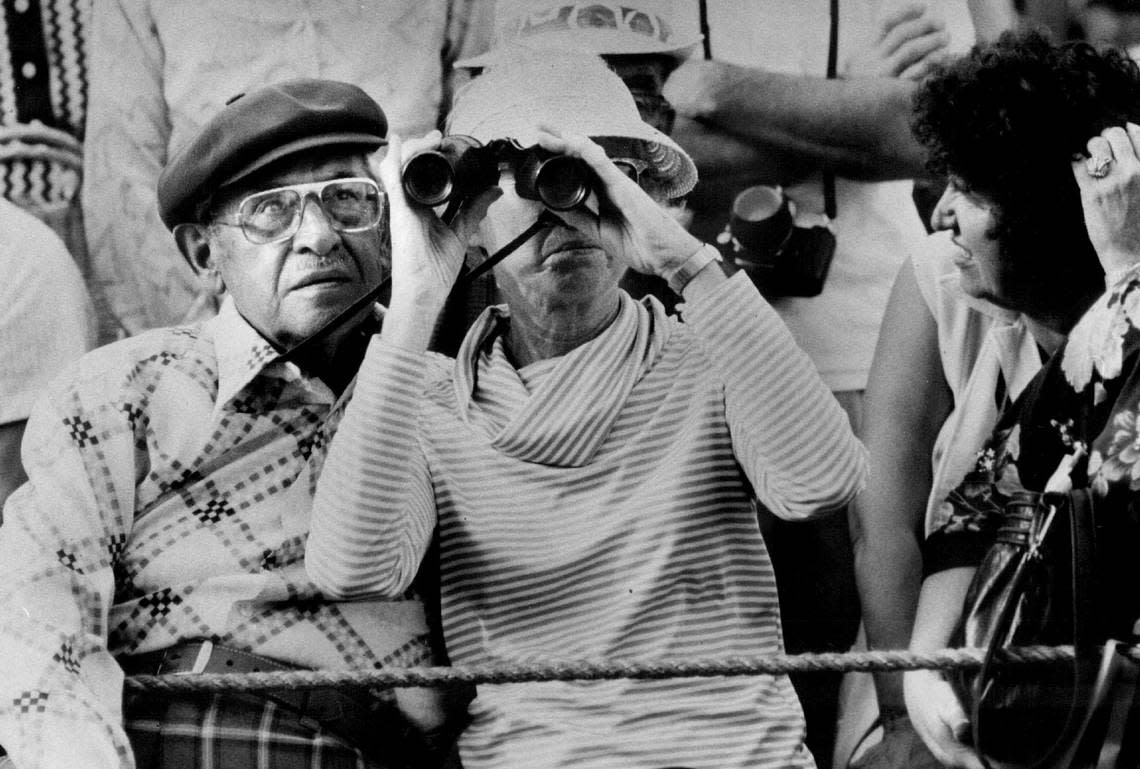
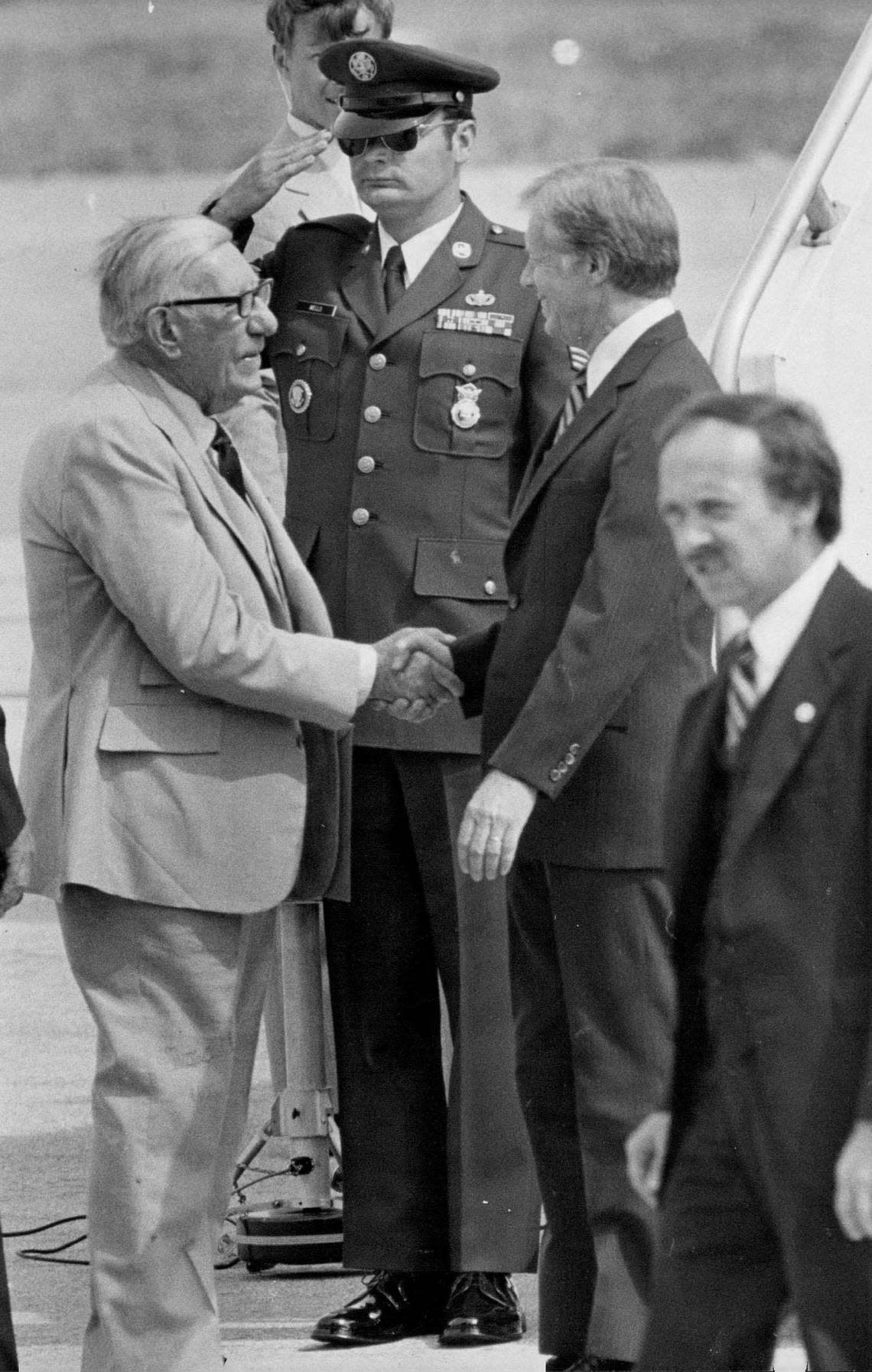
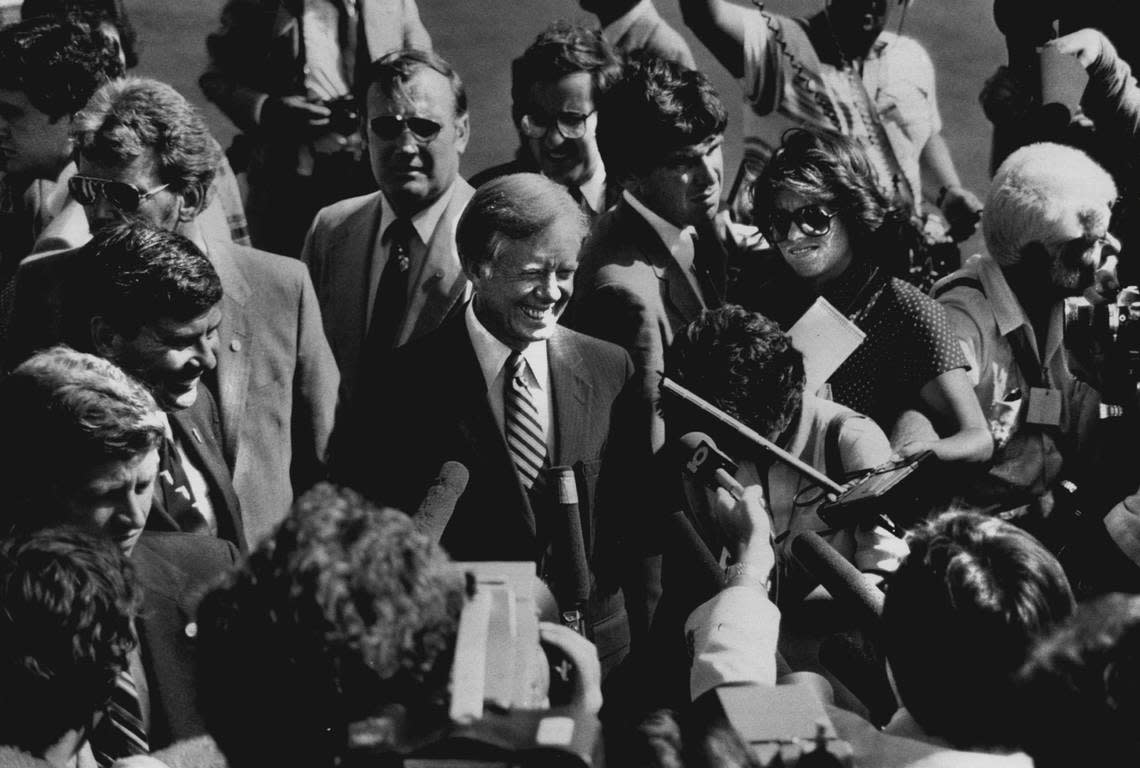
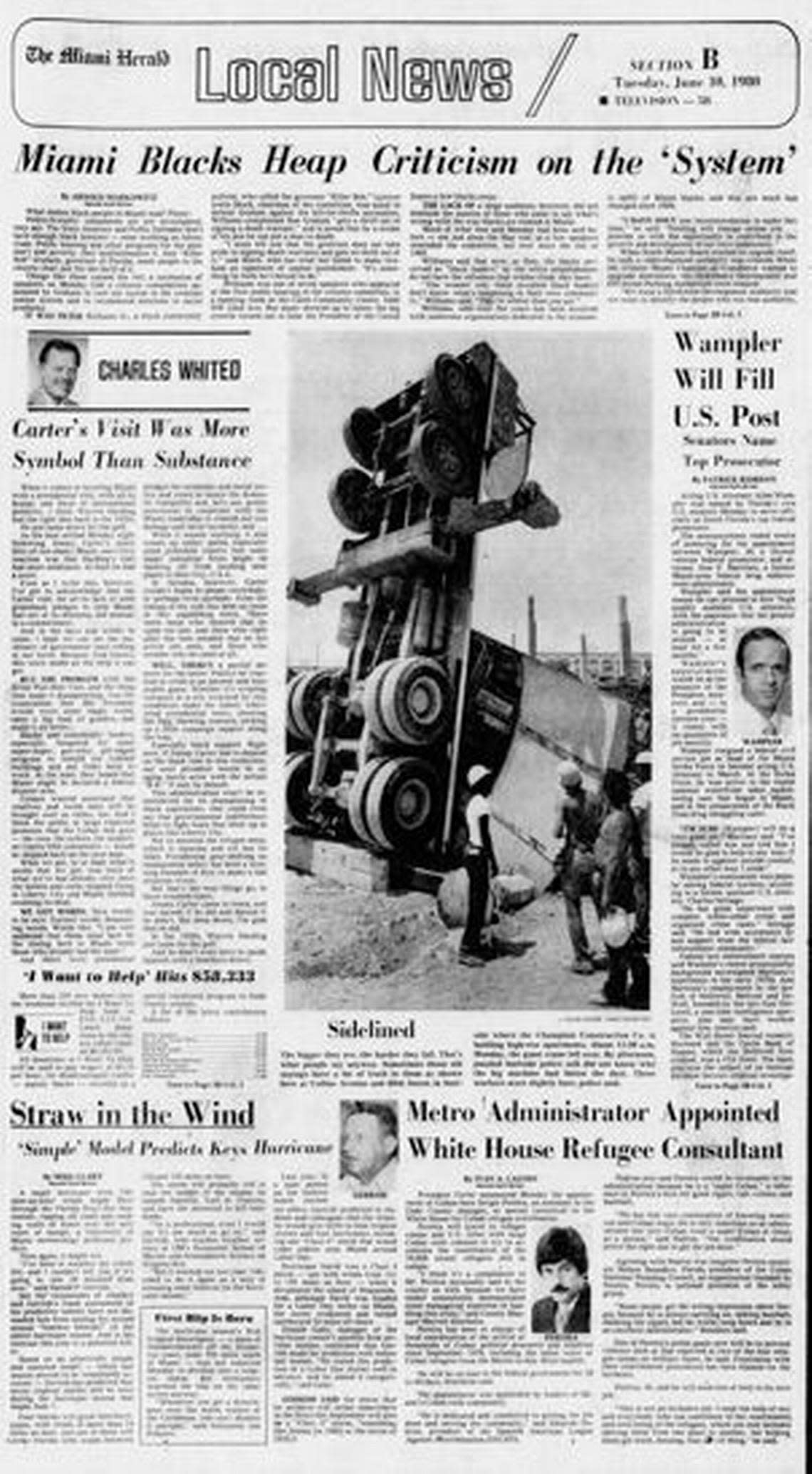
Photos from a visit to the Florida Keys
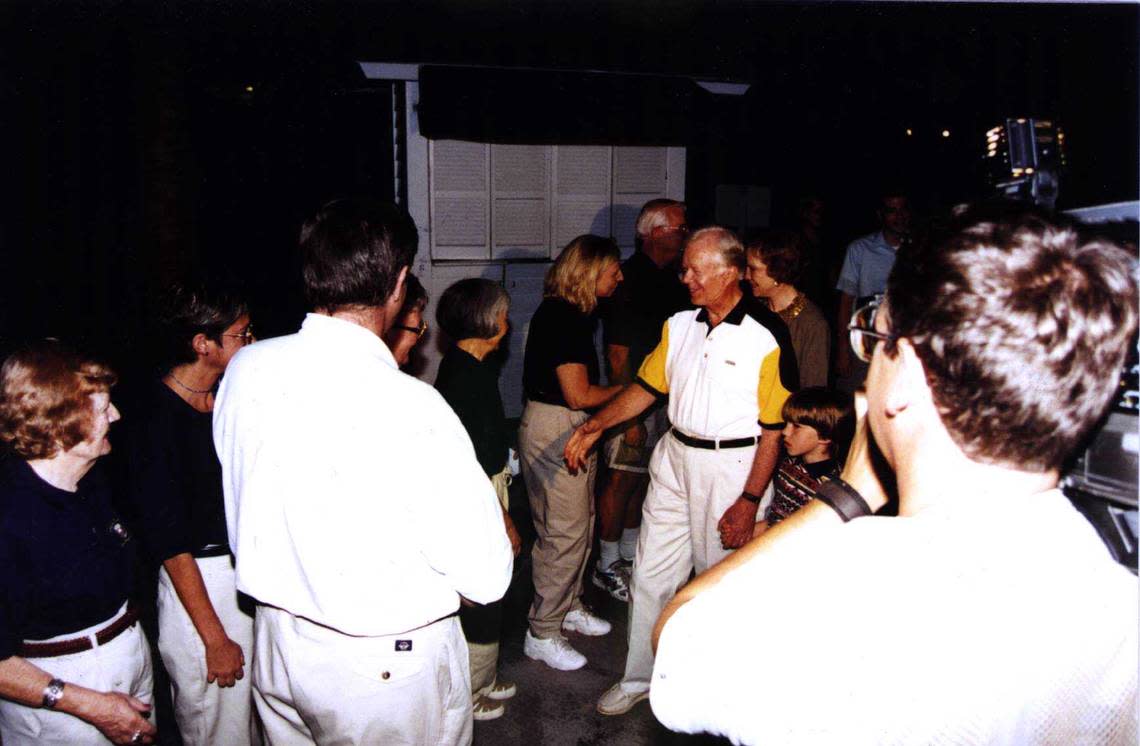
Time in Key West
Published in the Miami Herald on Dec. 27, 1996
By Nancy Klingener
Former President Jimmy Carter and his wife, Rosalynn, will spend New Year’s Eve at the former home of Harry Truman, continuing the tradition of presidents who visit the Florida Keys.
From Ulysses S. Grant to George Bush, the nation’s leaders have found a warm welcome and a respectful attitude from islanders. The Harry S Truman Little White House museum, which will host the Carters, was releasing few details Thursday about the visit.
“He is coming. It’s a private event,” said Hal Walsh, the museum’s director. The Carters, who are reportedly spending part of the holiday season in the Keys, will be the dinner guests of Henry and Mary Drettmann, who lease the Little White House from the state and restored it to Truman-era conditions several years ago.
All of our research has shown that Key Westers have always respected a president’s privacy when he comes to town,” Walsh said. “I’m sure that everybody will continue that tradition. After all, that’s what makes it special to America’s presidents.”
Climate, politics and geography have combined to make the Keys a convenient and attractive spot for presidents to relax or conduct business.
Coverage from 1980
From the Washington Post from June 10, 1980
Angry blacks booed and hurled bottles at President Carter’s motorcade tonight as it was leaving a community center in the heart of Liberty City, the inner-city section of Miami that was the scene of bloody rioting last month.
The president was not harmed, although one beer bottle struck the roof of his light-blue limousine. He later told reporters at the Miami airport that he had not been aware of the incident outside the James Scott community association building.
The violent scene erupted as Carter was leaving a meeting with community political and business leaders at which he pledged to “meet you at least halfway” in rebuilding riot-torn areas.
Emerging from the meeting, the president, surrounded by Secret Service agents, was greeted by booing and some wadded-up pieces of paper tossed in his direction. When he waved, the booing grew louder.
Carter entered his limousine and the motorcade quickly pulled away as more wads of paper and some bottles were thrown. Drivers of other motorcade cars, their horns blaring, threaded their way out of the area among scores of running people, some of whom jeered and made obscene gestures.
The melee was the most violent that Carter has encountered as president.
Rioting erupted in the black section of Miami May 17 after four white former policemen were acquitted in the beating death of a black Miami insuranceman, Arthur McDuffie. The rioting claimed 15 lives and, according to Mayor Maurice Ferre, caused at least $100 million in property damage.
Coverage from 1991
Published in the Miami Herald June 18, 1991
By Richard Wallace
Former President Jimmy Carter sweat out the housing crisis Monday in Miami. He took at least part of the solution into his own hands.
Carter drove nails, manhandled two-by-fours and measured walls and roof trusses in a low-key but hard-working volunteer role for Habitat for Humanity International.
Carter did not let muggy weather, clamoring photographers, fascinated spectators -- or even a gunshot that grazed a volunteer worker’s head a block from Carter’s work site -- deter him from his purpose.
Focusing on his carpentry, he worked steadily on one of the 14 houses rising this week at Northwest 60th Street and 21st Avenue in Liberty City.
The ex-president was unhurt and unfazed by the shooting incident in which one man, 34-year-old Pat Morris, was grazed by what police believe may have been a stray bullet.
“I’m not disappointed,” Carter said. The violence occurred at a lunch area one block west of where 450 Habitat volunteers toiled. Carter’s workplace was far away, on the opposite side of the tract.
“To me it just shows that we really need to build houses and let people know that they can have a good life in the future,” he said.
“I talked to the Habitat folks who have been working in this same spot for eight weeks. They’ve never had any incident like that.”
Not only will the shooting not affect the project, other Liberty City sites may be built upon soon, Carter said.
As he spoke to the press under a tent during a midday break, Carter wore blue jeans, a knit pullover, and a pair of running shoes.
While working in the sun, he donned a white baseball-style cap and a leather tool belt.
Carter cited a special reason for coming to Miami with the Georgia-based Habitat program, which is active in more than 30 countries.
“We see Miami as a city that’s leading some very rapid societal changes in a very successful way,” Carter said.
Habitat’s approach is particularly satisfying to him, the former president said.
“It’s not charity. Habitat doesn’t give away anything, except love, affection and partnership,” Carter said.
“The families have to do a lot of work on their own homes and other people’s homes,” he said. The families buy the houses with monthly payments, even though there is no interest and no profit involved.
The Habitat tract was an anthill of activity throughout the day.
Where there had been only concrete foundations at dawn, exterior walls were up and work on some interior walls and roof trusses already had begun by noon.
Despite an afternoon thunderstorm that briefly stalled the labor, roof trusses jutted upward virtually everywhere as evening approached. And work was moving quickly at a day-care center for Habitat residents’ children.
A new construction process is crucial to the project’s blitz-paced success. The cores of the walls are made of a plastic foam covered with sturdy wire mesh. The wall panels are locked into place on the foundation, then covered with blown-on concrete. Relatively inexpensive but sturdy construction.
Many of the volunteers are inexperienced in building, but they are closely supervised by experts.
Gerald Money, a general contractor from the St. Petersburg area, was both supervising and performing hand labor at one of the sites.
He had blood on his knuckles as he worked on the edges of a space that would become a window.
“I just wanted to give back some of what I’ve taken,” Money said.
In his post-presidential work stint, Carter maintained his folksy style. Although he waved to people who called out to him, he kept a firm, steady pace. His wife, Rosalynn, worked on the same house with him. She drove nails straight and true.
Carter, 66, has been to Liberty City four times, once during a period of violent unrest in 1980.
“I had an unfortunate political habit of going where trouble existed . . . before the trouble was over,” Carter said, smiling. “When I came down to Liberty City on my first visit when I was president, there were fires all around.”
Carter said working in Miami’s heat reminded him of his youth.
“It’s about like the South Georgia cotton fields. That’s where I grew up. It reminds of my old days shaking peanuts and picking cotton,” he said.
Along with building houses, Habitat for Humanity International did some fence-mending Monday.
Millard Fuller, the group’s founder and president, said he has withdrawn his resignation. After becoming embroiled in an internal dispute, Fuller had announced his intent to quit in August.
“I’m just delighted that we have solved this internal leadership crisis so that we can get back, without any impediments, to devoting all of our energies to putting up housing,” Fuller said at the Liberty City site.
